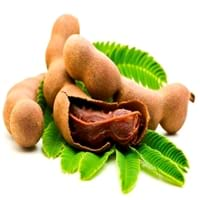Health Benefits
Boosts immune system, Boosts respiratory health, Cancer prevention, Digestive aid, Piles treatment
Asthma treatment, Cancer prevention, Controls blood pressure, Digestive aid, Heart care, Maintains hormonal balance, Regulation of heart rate, Skin cleansing, Skin rejuvenation
General Benefits
Beneficial in improving nerve function, Protects against parasites and worms, Relieves pain
Boosts immune system, Controls blood pressure, Digestive aid, Eye care, Maintains healthy cholesterol level, Strengthens bones
Skin Benefits
Anti-aging benefits, Brightens and lightens complexion, Exfoliates skin, Hydrates skin, Treatment of dark spots
Hydrates skin, Reduces wrinkles, Treatment of dark spots, Treatment of skin diseases
Hair Benefits
Prevents hair loss
Good conditioner, Regulates hair growth, Rejuvenates scalp, Softening mask, Treatment of dandruff
Allergy Symptoms
Abdominal pains, Breathing difficulty, Dizziness, Eczema, Fainting, Hives, Itching, Nasal congestion, Swelling of face, Tingling sensation in mouth, Vomiting
Abdominal cramps, Anaphylaxis, Breathing difficulty, Diarrhea, Itching of mouth, Itching sensation in throat, Swelling of mouth, tongue or lips, Vomiting, Wheezing
Side Effects
Decrease in blood sugar levels, Induces acid reflux, Allergic reaction, Tooth decay, May form gallstones
Dizziness, Headache, Nausea, Vomiting
Best Time to Eat
Along with meal, As a snack in the late afternoon, Don't consume at night and before bed, Strictly avoid empty stomach
Best if taken as a breakfast (or empty stomach), As a snack in the late afternoon, Don't consume at night and before bed, Eat the fresh ones, avoid mixing with any other foods, don't eat after meal.
Vitamin B5 (Pantothenic Acid)
Vitamin C (Ascorbic Acid)
Vitamin K (Phyllochinone)
Calories in Fresh Fruit with Peel
Not Available
Calories in Fresh Fruit without Peel
Not Available
Calories in Frozen Form
Not Available
Calories in Canned Form
Not Available
Season
Spring, Summer
Summer
Varieties
PKM 1, Urigam, Hasanur, Tumkur prathisthan, DTS 1 and Yogeshwari
Gold Cot, Tilton, Wenatchee, Goldbar, Gold Kist, Tomcot, Harcot, Brittany Gold, Harglow, Hunza, Moorpark, Patterson and Royal Rosa
Color
Brown, Reddish-brown
Orange, Yellowish-orange
Inside Color
Brown
Yellow
Shape
Curving Cylinder
Oval
Taste
Sour-Sweet
Smooth, Sweet
Soil Type
Loam, Sandy, Sandy loam, Well-drained
Well-drained
Climatic Conditions
Humid to dry, Rainfall, Warm to hot climate
Dry, Hot
Facts about
- Tamarind is used to prevent body odor.
- African children use the tamarind seeds in games.
- No cases of tamarind toxicity or allergy reported till date.
- 9 Jan is considered as the National Apricot Day.
- Apricots have been around for more than 4000 yrs.
- In latin, the meaning of apricot is 'precious'.
- 95% of apricots in the US are produced by California.
Top Producer
India
Turkey
Other Countries
Africa, Australia, Brazil, China, Mexico, Nigeria, Sudan, Taiwan
Algeria, Egypt, France, Iran, Italy, Morocco, Pakistan, Spain, Uzbekistan
Top Importer
United States of America
United States of America
Top Exporter
Thailand
France
Botanical Name
Tamarindus indica
Prunus armeniaca
Synonym
Tamarindo, tamarindus
Not Available
Subkingdom
Tracheobionta
Tracheobionta
Division
Magnoliophyta
Magnoliophyta
Class
Liliopsida
Magnoliopsida
Species
Tamarindus indica
P. armeniaca
Generic Group
Tamarind Sub
Rose
Compare Tamarind and Apricot
It is important compare Tamarind and Apricot as both the fruits have a different nutritional value. Their comparison can be done on the basis of their vitamin and mineral content, calories, benefits as well as characteristics, making it easier for us to choose the best fruit for our diet. Their general health benefits are as follows:
Tamarind Benefits: beneficial in improving nerve function, protects against parasites and worms and relieves pain.
Apricot Benefits: boosts immune system, controls blood pressure, digestive aid, eye care, maintains healthy cholesterol level and strengthens bones.
Fruits are also used as a remedy for various hair problems. The hair benefits of Tamarind are: prevents hair loss and hair benefits of Apricot are: good conditioner, regulates hair growth, rejuvenates scalp, softening mask and treatment of dandruff. Some fruits are known to cause allergic reactions. The allergy symptoms of first fruit are: abdominal pains, breathing difficulty, dizziness, eczema, fainting, hives, itching, nasal congestion, swelling of face, tingling sensation in mouth and vomiting and the symptoms of second fruit are: abdominal cramps, anaphylaxis, breathing difficulty, diarrhea, itching of mouth, itching sensation in throat, swelling of mouth, tongue or lips, vomiting and wheezing. Get sorted Tamarind vs Apricot comparison with the help of fruit comparison tool by fruitvs.com.









